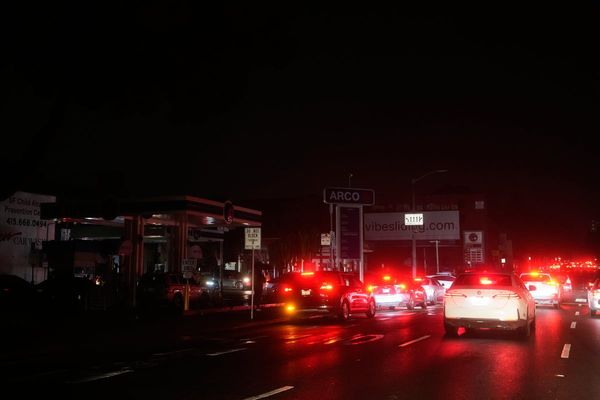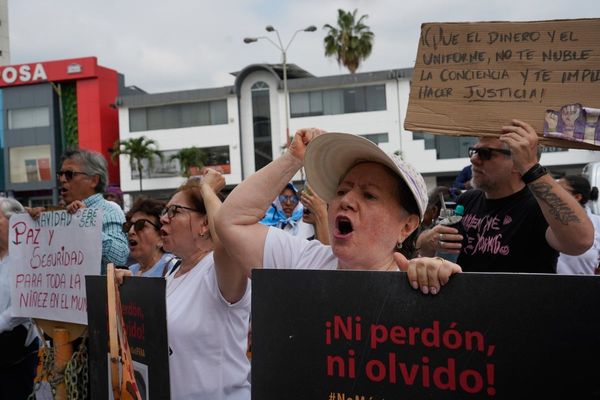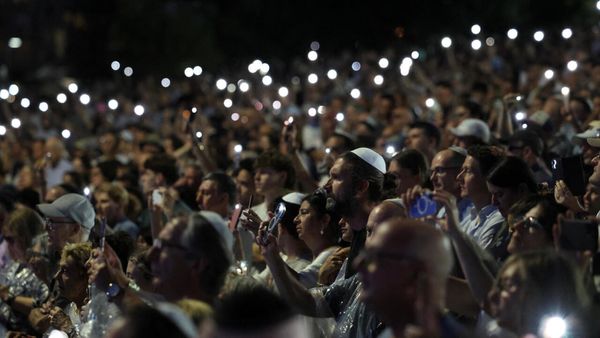
You couldn’t fault Peter Dutton for giving good darkness. The opposition leader has gone from Queensland cop skinhead to — with those ridiculous glasses — looking like Dr Bunsen Honeydew from The Muppet Show (with Matt Canavan as Beaker). Hasn’t done much good. He’s still the man from the Australian shadows, which is doubtless a source of appeal to many.
So it would be easy to dismiss his pitch to undercut Labor on reducing Australia’s immigration intake, given the usual stuff he attached to it, and the memory of his warning (with a little help from racist Herald-Sun cartoons) that African gangs were stopping Melburnians from going to restaurants, as if anything up to and beyond nuclear holocaust could do that.
Many progressives and the left are doing so, tying any attempt to discuss immigration numbers or overseas student numbers with racism and xenophobia. Laura Tingle summed it up on Insiders — the horror of the scourge of racism is that one had to watch some of Insiders — noting Dutton was “lighting this up in a really dangerous way”, “didn’t really have a coherent answer”, and as such, it was “really dangerous for our community”.
That was a primo example of the Megalogenis tingle. The Megalogenis tingle is the excited feeling press gallery intellectuals get when they compare the present to the Hawke-Keating years, and how the country’s politics has been pernicious or crazy ever since.
The Megalogenis tingle, very widespread, takes the exceptional period of Hawke-Keating — one of mainstream political consensus on economic neoliberalisation, conducted by Labor after the failure of the Fraser government to make a go on it — and makes it the rule.
Since that process depoliticised core politics for a decade, actual politics — in which irreconcilable interests and ideas-based groups fight issues to a draw and then re-open them later — comes to be seen as inherently pathological. Or, in the hands of progressives, it’s seen as a displaced expression of something else. The question of immigration quantity has been sealed for so long in Australia that it can be rendered as nothing other than a gateway to racism.
That is not going to fly anymore, here. It’s kind of amazing it has been ruled out of politics for so long. Everywhere else, it has become the pivot for politics. The whole of Europe has gone rightwards, largely because the Maastricht Treaty switched movement and immigration from an invitation by a community to a right to cross borders.
In Australia, our low population, continued economic expansion and labour “need” — more on that in a moment — have served as a relief valve for any serious confrontation on the issue. Indeed it has allowed us to duck the larger issue behind it: what kind of Australia do we want?
We had a definite answer to that for more than a century, though the answer changed. We were to be a continent of the British, white, Anglo-Celtic family for more than a century, then we were to be a steadily expanding multicultural society within the Commonwealth. In the middle of that, the question of settler-Indigenous relations — largely about Anglo-Celtic and Indigenous relations — went live, and has run in parallel.
Behind those two very different ideas was a unity: we had to grow — for military-security and economic purposes — on this vast landform. Such growth shaped politics. Post-war liberalism was statist, in service to such an ideal. Laissez-faire economics would have been impossible.
Now? Now, we have decided not to be a nation-building state, but to continue to build the numbers anyway. Were we still a nation-building state, we would not have spent decades transferring money from public to private to create a vast housing bubble. We would be, in a bipartisan spirit, shaking down the mining industry for some real revenue.
With that, we would get out our pathetic underdevelopment, in which urban development has been handed to shonks to carve up our fringes into transportless non-cities, a rail link to an airport has been debated and delayed for three decades, public trade education systems have been destroyed leaving vast skills shortages, and on and on.
So, the decision might be not that such a state system should be revived, but that we should decide that large-scale immigration has been enough for a while. That decision would not be merely an economic one but also a cultural and existential one as well.
Would it be a wise one, strategically and economically? Not necessarily, but that’s the debate that has to be had. Certain consequences have arisen from continued high immigration, and the destruction of a public education system is one of them.
Why put money into drawing a developing underclass out of poverty and intergenerational exclusion if you can just keep shipping in people willing to work for lower wages for a time? And keep benefiting from exchange rates to make the reward a lot better? We would have to draw people back to work, with proper training, grants, etc, without a ready supply of workers for whom someone else has done the educating.
Secondly, among several issues, there is the question of settler-Indigenous relations. Racial politics hide a grim truth: if the non-Indigenous population in Australia grows significantly faster than the Indigenous birth and identification rate, then First Nations peoples are going backwards.
At 3.8% as of 2021, Aboriginal and Torres Strait Islander peoples are just hanging on to the numerical heft for some influence. Once they go below 2.5%, they’re in trouble. Below 2%, it’s all over. They simply lack the numbers to make the central social agon one of settlement and indigenity. At that point, the agon, the defining struggle, becomes one of residence and arrival. The colonisation project is then completed, not in the red centre but in the international arrivals lounge.
I have no definite answer to any of this. My instinct is to pause and consolidate infrastructure and cultural questions of who we are. A wider strategic question might be that we will need to be big to face what is coming. Given climate change, we may be told, in a few decades, that we will be sharing this continent with another 100 million people not, 10.
In that circumstance, both the 1788 “Australia” project and the Indigenous “project” that preceded it are concluded absolutely, as the world is wholly reorganised. That possible moment is well within the lifetime of many Australians alive today.
Thus, possibly, we need to be big enough, with enough people calling themselves “Australian”, to have some heft in the matter. We certainly have little now. And with or without that dark horizon, we are not having the conversation we need about the country/continent we want to be. We are f*cked, far from home, and a long way from the Megalogenis tingle. And the only winners from the lack of an open conversation are those, like Peter Dutton, who want one in the shadows.







